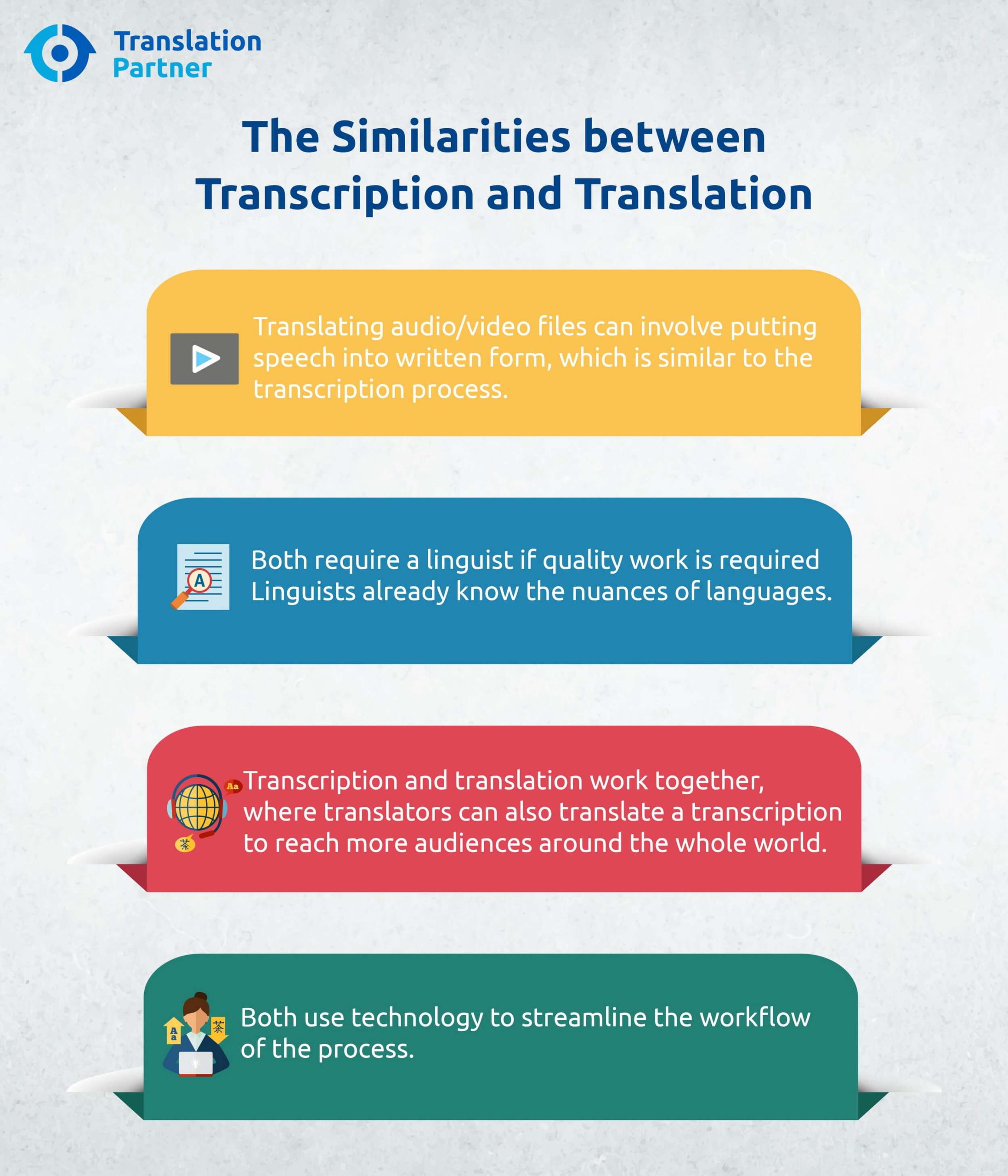What is the Difference Between Transcription and Translation in Language Services?

Translation and transcription sound similar, but they mean two different things.
In this article, you will understand the difference between transcription and translation in language services.
What is Transcription?
Transcription is the written form of audio content that was listened to. It’s done when the listener directly writes down all the content of the audio file in words with the same language used by the speaker.
What is Translation?
This is the process of transforming a written text from one language (the source) and conveying it into the written text of another language (the target).
What is Unique about Transcription:
– The source of the language may be sign language or a recorded speech or movie.
– In academic linguistics, transcription is important for speech technology, sociolinguistics, dialectology, conversation analysis, and phonetics.
– The transcription specialist (transcriber) needs to have a deep knowledge of colloquial expressions.
– The transcriber only works with one language, so competency in that language is not an issue.
– Transcription requires two different formats. It starts with an audio format but ends with a written one.
Read More about Transcription Formats, Click Here
What is Unique about Translation:
– Translation requires dealing with two different languages: the source language and the target language.
– Translation often involves written content, such as corporate reports, marketing material, and instruction manuals. etc.
– Translation requires high skills in creative writing to deliver the intended message of the source language accurately.
– Due to globalization and multiculturalism, translation has become essential for facilitating mutual understanding and communication among people who speak different languages.
– Translation technology is always evolving to make use of old translated material, which is not possible yet in transcription.
– Translation deals with many categories, literary and non-literary. As we know, literary translation involves poems, stories, and novels and for non-literary translation, there are legal, scientific, and technical applications.
The Similarities between Transcription and Translation:

While there is a difference between transcription and translation in their definitions, there are also some similarities.
– Translating audio/video files can involve putting speech into written form, which is similar to the transcription process.
– Both require a linguist if quality work is required. Linguists already know the nuances of languages.
-Transcription and translation work together, where translators can also translate a transcription to reach more audiences around the whole world.
– Both use technology to streamline the workflow of the process.
Additional Reading: Transcript Layouts and Transcript Templates, Click Here
Conclusion
When it comes to language services, translation, and transcription are two different services and fields. They have many things in common but require different skills. Usually, translation is needed for marketing purposes, while transcription is needed for informational purposes. In either case, linguists are the best resource to do translation and transcription. They have studied languages deeply and can figure out mistakes in translation and understand dialects in transcription.
